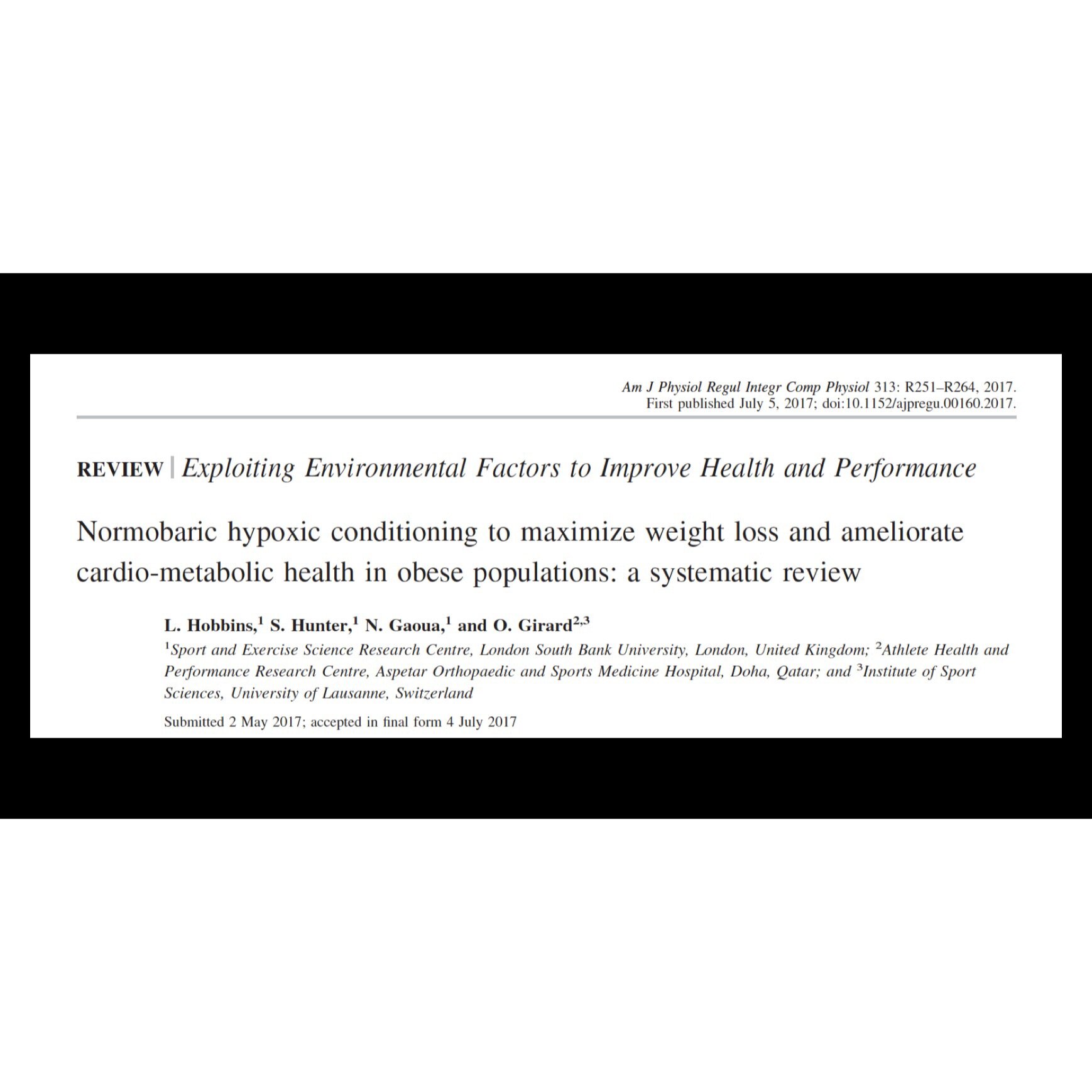Key Points
Hypoxia positively impacts insulin and blood glucose while also increasing energy use
Hypoxia and exercise combined reduce weight and blood pressure in obese patients
The positive effects of hypoxia are dose-dependent
Breathing Blueprint Summary
I love review studies because they save us a lot of time. Researchers go through all of the literature on a specific topic and consolidate everything into one place for us to read. I like to think of The Breathing Diabetic as a big review of all of the research on breathing, health, and well-being…
This paper reviewed the literature on the potential therapeutic benefits of hypoxia for obese individuals. We know from other papers we have reviewed on hypoxia that there are many benefits for diabetics as well. And, since diabetes and obesity often occur simultaneously, this review study is relevant for us.
One important point they make, which bears repeating, is that it is not feasible for us all to have access to high altitude. We cannot simply move to the mountains, or somewhere close enough, to periodically expose ourselves to high altitude. But, there are ways to experience some of the effects of altitude while at sea level. The authors specifically mention masks and tents that can reduce the amount of inspired oxygen to simulate high altitude. However, we cannot forget that breath holds also simulate high altitude and are available to us anytime, for free!
One of the key findings was that fasting blood glucose and insulin levels were reduced in animals following intermittent hypoxia. Additionally, energy expenditure was increased in animals following hypoxic exposure. Finally, hypoxia combined with exercise (what they called “active hypoxia”) decreased body weight and blood pressure in obese humans.
They also found contradictory results in some studies, which appeared to be due to the severity of the hypoxia protocol used (something we have reviewed previously). Thus, again we see that the benefits of hypoxia are dose-dependent.
Overall, the authors conclude that hypoxia could be beneficial for obese populations. However, the improvements in insulin, blood glucose, weight, and blood pressure shown here are further evidence that intermittent hypoxia (Principle 3) can benefit anyone looking to improve overall health and well-being.
Abstract From Paper
Normobaric hypoxic conditioning (HC) is defined as exposure to systemic and/or local hypoxia at rest (passive) or combined with exercise training (active). HC has been previously used by healthy and athletic populations to enhance their physical capacity and improve performance in the lead up to competition. Recently, HC has also been applied acutely (single exposure) and chronically (repeated exposure over several weeks) to overweight and obese populations with the intention of managing and potentially increasing cardio-metabolic health and weight loss. At present, it is unclear what the cardio-metabolic health and weight loss responses of obese populations are in response to passive and active HC. Exploration of potential benefits of exposure to both passive and active HC may provide pivotal findings for improving health and well being in these individuals. A systematic literature search for articles published between 2000 and 2017 was carried out. Studies investigating the effects of normobaric HC as a novel therapeutic approach to elicit improvements in the cardio-metabolic health and weight loss of obese populations were included. Studies investigated passive (n = 7; 5 animals, 2 humans), active (n = 4; all humans) and a combination of passive and active (n = 4; 3 animals, 1 human) HC to an inspired oxygen fraction (FIO2) between 4.8 and 15.0%, ranging between a single session and daily sessions per week, lasting from 5 days up to 8 mo. Passive HC led to reduced insulin concentrations (-37 to -22%) in obese animals and increased energy expenditure (+12 to +16%) in obese humans, whereas active HC lead to reductions in body weight (-4 to -2%) in obese animals and humans, and blood pressure (-8 to -3%) in obese humans compared with a matched workload in normoxic conditions. Inconclusive findings, however, exist in determining the impact of acute and chronic HC on markers such as triglycerides, cholesterol levels, and fitness capacity. Importantly, most of the studies that included animal models involved exposure to severe levels of hypoxia (FIO2 = 5.0%; simulated altitude >10,000 m) that are not suitable for human populations. Overall, normobaric HC demonstrated observable positive findings in relation to insulin and energy expenditure (passive), and body weight and blood pressure (active), which may improve the cardio-metabolic health and body weight management of obese populations. However, further evidence on responses of circulating biomarkers to both passive and active HC in humans is warranted.
Journal Reference:
Hobbins L, Hunter S, Gaoua N, Girard O. Normobaric hypoxic conditioning to maximize weight loss and ameliorate cardio-metabolic health in obese populations: a systematic review. Am J Physiol Regul Integr Comp Physiol. 2017;313:R251-R264.

